If you have been keeping up with our progress on Facebook regarding the Cattle Ranch Baroness gown, you have seen the steps involved from sketch to final project. However, I would like to dedicate a blog post to the details of this particular gown.
There are several construction features that may not be visible when perusing historical garments for purchase online. I am referring to things like facings, linings, internal construction, seam finishes, ease, etc. To me, the interior of a garment is just as important as the outside. So unless there are copious notes dedicated to each piece, a prospective buyer really has no idea what they are purchasing until it arrives. Let me show you a little about what I mean:
Here is our recently finished 1880s era bustle gown. Basic description as follows:
1880s era bustle gown suitable for day or evening wear. Two piece gown- consisting of separate skirt and bodice. Three quarter length fitted sleeves. 100% silk body/100% cotton lining.
Now here’s what is not listed in the description (or what I REALLY want to know):
Bodice: Fully lined in black cotton to protect the integrity of the silk and to provide comfort in wear. Sewn into the lining are 3 rows of lightweight boning at center back and 2 longer rows of boning at center front. This provides the wearer support, eliminates sag, and helps hold the overall shape of the bodice. The lightweight boning is not visible from the outside of the gown and is practically undetectable.
Skirt: The skirt consists of 3 layers- a built in cotton lining, the skirt, and the bustled overskirt. The trim details on the skirt are hand stitched at intervals along the top layer of the pleated ruffle. The silk ruffle at the base of the skirt employs a small cotton binding to protect the silk against any moisture, dirt, or other unfavorable elements if it touches the ground. If you look at any original silk gown- regardless of period, you will notice the hem always shows signs of wear. This cotton binding will help reinforce the delicate silk fabric and eliminate the potential for any wear and tear.
While working with this particular client, I realized she was not necessarily interested in wearing the full “encoutrement” under her gown. So I built a petticoat and bustle into the skirt itself. By building in the “undergarments”, the client can still achieve the period look without having to fuss with multiple layers under her gown. The ability to adapt, be flexible, and be creative is an important characteristic of any good seamstress.
A few other things to note: The waistband of the skirt is also fully lined in cotton. Cotton is more forgiving against the skin than silk.
In regards to ease, depending upon what part of the garment we are discussing, I typically allow 1-2″ for ease beyond the measurements provided. (Ease is extra fabric alloted for movement of the human body).
In 2012, we began finishing interior seams (and all seams not visible) with sergers. It is my thought that in addition to creating stronger seams, this finishing technique creates a cleaner, more polished garment. Our museum clients and living history patrons are always given the option of more traditional finishing techniques. However, it has been the consensus of the majority that serging interior and unseen seams is an acceptable practice.

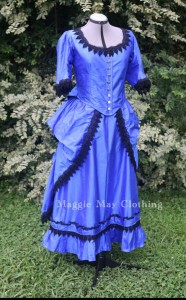
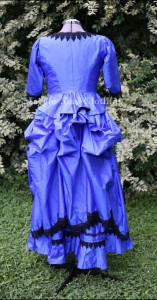
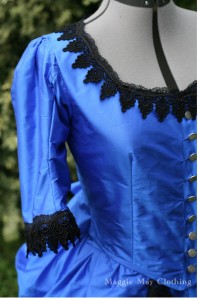
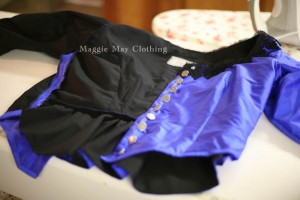
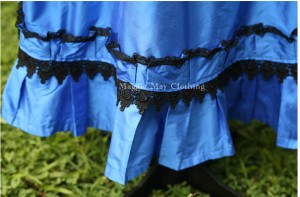
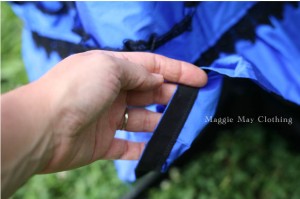
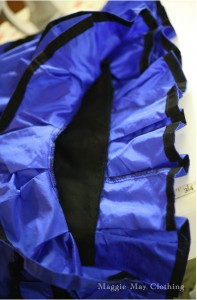
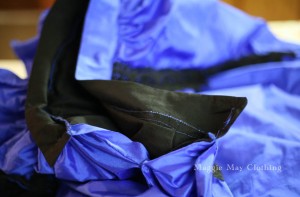

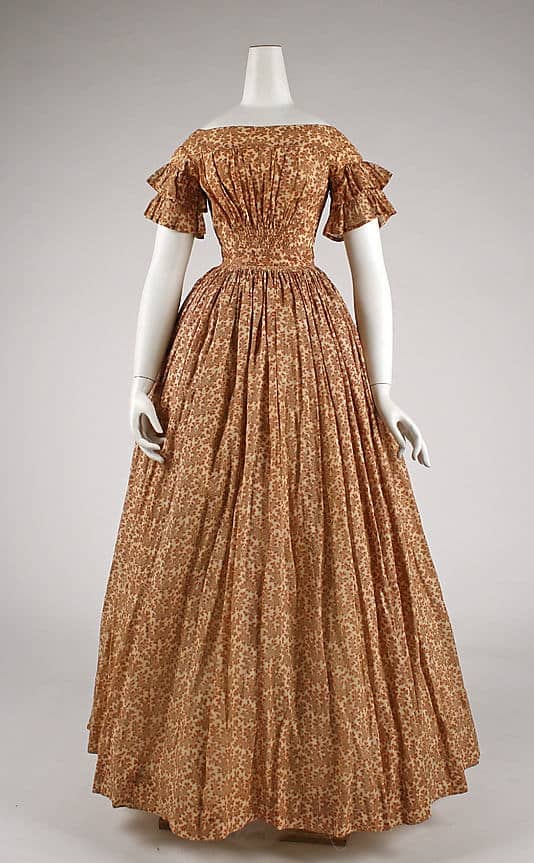
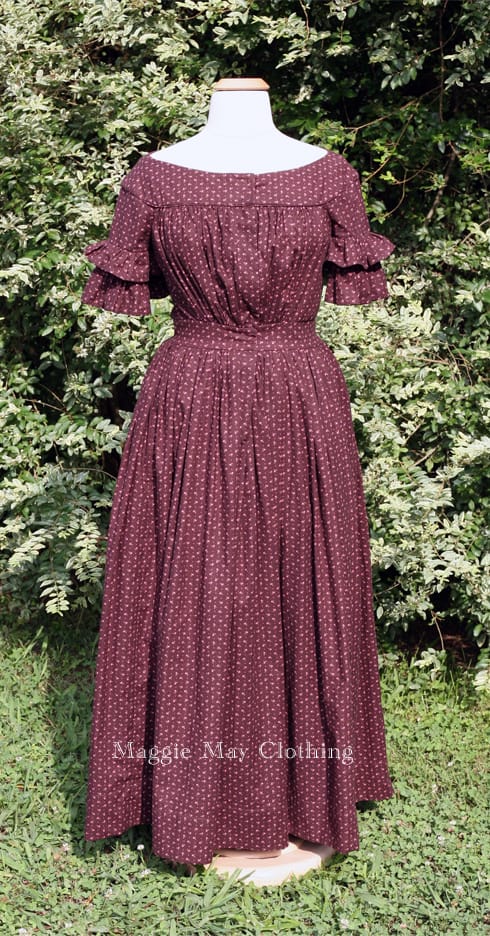

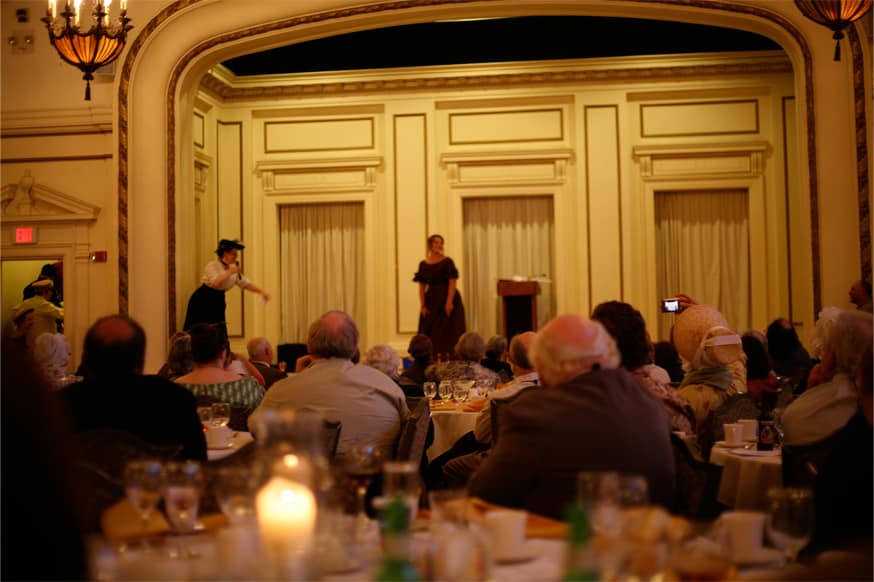
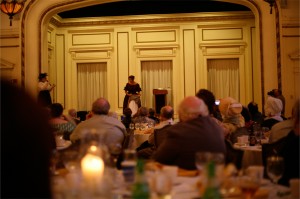

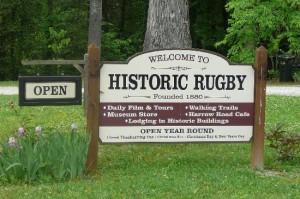

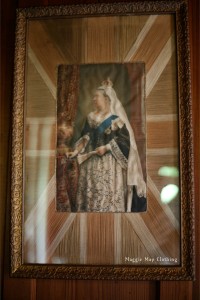

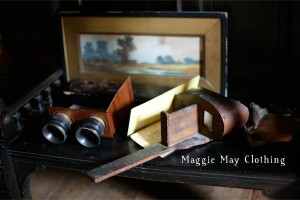
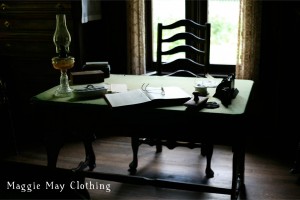


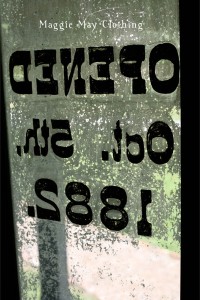
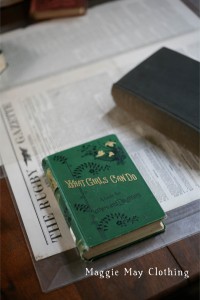
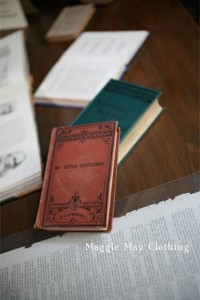
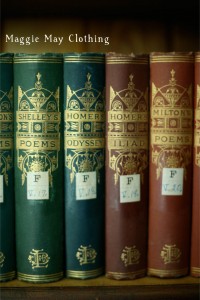
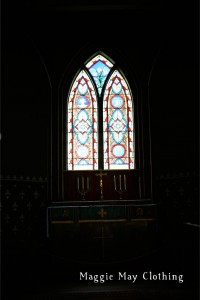
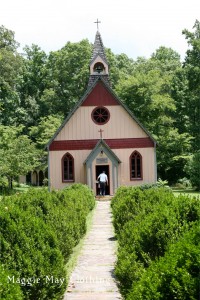
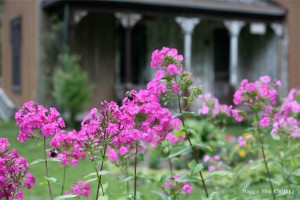

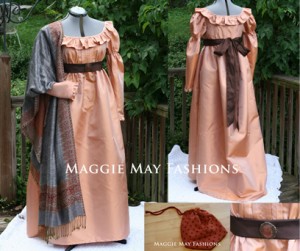
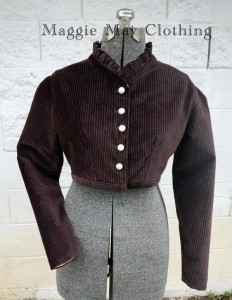
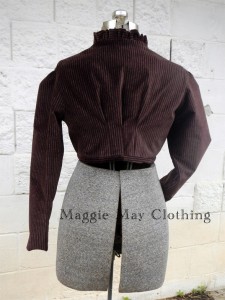



 The Trinion Collection:
The Trinion Collection:









